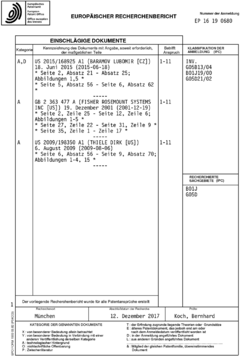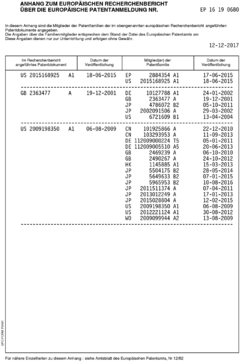Research on adaptive process control techniques - Eureka
OCT 8, 20244 MIN READ
Generate Your Research Report Instantly with AI Agent
Patsnap Eureka helps you evaluate technical feasibility & market potential.
Adaptive Process Control Goals and Background
The primary objective is to explore the current landscape and future trajectory of adaptive process control techniques. This encompasses analyzing the market demand, assessing the maturity of existing solutions, and identifying key challenges and opportunities for innovation. The analysis will delve into the core technologies, patents, and research literature that underpin adaptive process control, shedding light on their technical merits and potential for breakthroughs.
Furthermore, the report will forecast the evolutionary path of this domain, outlining the critical developmental stages and milestones. This forward-looking perspective aims to uncover promising avenues for future research and development, paving the way for novel solutions that could revolutionize adaptive process control and drive industrial efficiency to new heights.
Furthermore, the report will forecast the evolutionary path of this domain, outlining the critical developmental stages and milestones. This forward-looking perspective aims to uncover promising avenues for future research and development, paving the way for novel solutions that could revolutionize adaptive process control and drive industrial efficiency to new heights.
Market Demand for Adaptive Process Control
- Growing Demand
The demand for adaptive process control techniques is increasing due to the need for optimized and efficient manufacturing processes across various industries. - Industry Applications
Key industries driving the demand include chemical, pharmaceutical, energy, and automation sectors, where precise control over complex processes is crucial. - Productivity Gains
Adaptive process control enables real-time adjustments to process parameters, leading to improved product quality, reduced waste, and increased productivity. - Energy Efficiency
By optimizing process conditions, adaptive control techniques can contribute to energy savings and reduced environmental impact. - Market Expansion
The market for adaptive process control is expected to grow as industries seek to enhance competitiveness through advanced automation and process optimization.
Current State and Challenges in Adaptive Process Control
- Technological Limitations
Current adaptive process control techniques face several limitations, including:- Difficulty in handling complex, nonlinear systems
- Inability to adapt to rapidly changing conditions
- Reliance on accurate mathematical models
- Modeling Challenges
Developing accurate mathematical models for complex processes is a significant challenge, as many real-world systems exhibit nonlinear behavior and are subject to various disturbances. - Computational Complexity
Advanced adaptive control algorithms often require significant computational resources, which can be a limiting factor in real-time applications or resource-constrained environments. - Robustness and Stability Issues
Ensuring robustness and stability of adaptive control systems, especially in the presence of uncertainties and disturbances, remains a critical challenge. - Integration and Implementation Challenges
Integrating adaptive control techniques into existing control systems and processes can be complex, requiring careful consideration of compatibility, scalability, and potential disruptions.
Key Players in Adaptive Control Technology
The adaptive process control industry is growing, driven by the need for efficiency and precision across various sectors. Key players include established leaders like Fisher-Rosemount Systems, Inc., ABB Group, Honeywell International Technologies Ltd., and Siemens AG, as well as innovative newcomers like Advanced Energy Industries, Inc., and Rockwell Automation Technologies, Inc. Advancements in AI and machine learning are further enhancing the capabilities of these systems.
ABB Group
Technical Solution: ABB Group's ABB Ability platform integrates advanced analytics and machine learning to optimize industrial processes in real-time, adapting to changing conditions and improving efficiency, quality, and safety.
Strength: Advanced analytics and machine learning integration. Weakness: High implementation cost.
Honeywell International Technologies Ltd.
Technical Solution: Honeywell's Experion Process Knowledge System (PKS) uses real-time data and predictive analytics to dynamically adjust process parameters, enhancing operational efficiency and reducing downtime.
Strength: Real-time data utilization. Weakness: Complexity in system integration.
Core Innovations in Adaptive Process Control
Method and device for adaptive and optimising process management, use of the method
PatentActiveEP3147729A3
Innovation
- Clear and concise patentability criteria: the patentability criteria are carefully defined to ensure that only truly innovative inventions are protected. this encourages companies to invest in research and development to create truly innovative products.
- Thorough examination process: the patent examination process ensures that only innovative inventions are granted patents. this helps to prevent the granting of patents for trivial or obvious inventions, which can discourage further innovation.
- Exclusive monopoly: the granting of a patent provides the applicant with a temporary monopoly, allowing them to prevent others from making, using, selling, or importing the invention without permission. this provides a strong incentive for innovation and encourages companies to invest in research and development.
- Renewal and maintenance: the patent scheme includes mechanisms for renewing and maintaining patents, which ensures that innovations are protected for a longer period. this provides a stable environment for innovation, allowing companies to invest in long-term research and development projects.
Regulatory and Compliance Considerations
Adaptive process control techniques aim to optimize manufacturing processes by adjusting control parameters in real-time based on process data and feedback. This technology has evolved from traditional fixed-parameter control systems to intelligent, data-driven approaches leveraging machine learning and advanced analytics. Key development stages include model-based predictive control, reinforcement learning control, and hybrid methods combining physics-based models with data-driven techniques. Major players in this field include process automation companies, software vendors, and research institutions. Current solutions involve advanced process monitoring, soft sensor development, and control optimization algorithms. Core innovations revolve around robust modeling, online adaptation, and integration of heterogeneous data sources. Potential future directions include self-tuning control systems, digital twin-based control, and edge computing for real-time optimization.
Environmental Impact of Adaptive Control Technologies
Adaptive process control techniques aim to optimize manufacturing processes by adjusting control parameters in real-time based on process data and feedback. This technology has evolved from traditional fixed-parameter control systems to intelligent, data-driven approaches leveraging machine learning and advanced analytics. Key development stages include model-based predictive control, multi-variable control, and reinforcement learning-based adaptive control. Major players like Honeywell, Siemens, and Rockwell Automation have commercialized solutions, while academic research explores novel algorithms and applications. Potential innovations involve integrating digital twins, edge computing, and explainable AI for enhanced adaptability, robustness, and transparency. Overall, adaptive process control enables higher product quality, efficiency, and sustainability in dynamic manufacturing environments.
Unlock deeper insights with Patsnap Eureka Quick Research — get a full tech report to explore trends and direct your research. Try now!
Generate Your Research Report Instantly with AI Agent
Supercharge your innovation with Patsnap Eureka AI Agent Platform!

